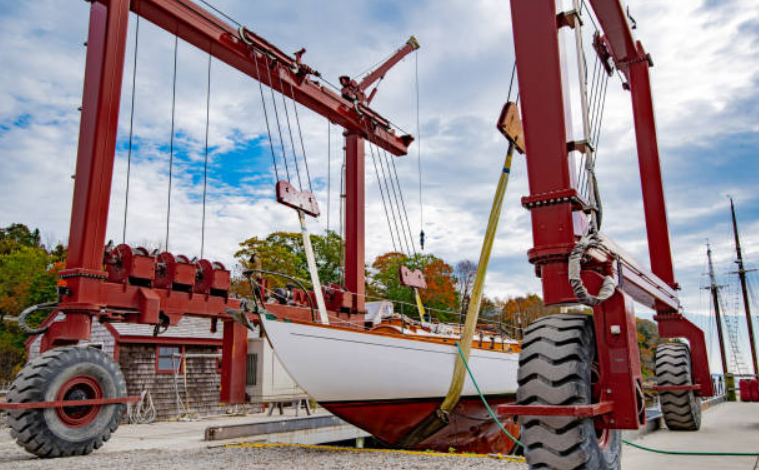Choosing the Right Boat Lift for Your Dock: Key Considerations

Investing in a boat lift is one of the best decisions you can make to protect your watercraft and improve your overall boating experience. By keeping your boat out of the water when not in use, a lift prevents hull damage, reduces maintenance needs, and makes launching more efficient. However, with so many types, sizes, and features available, choosing the right boat lift for your dock can feel overwhelming.
Regular boat lift service helps prevent cable wear, motor problems, and structural damage, ensuring reliable operation while protecting your watercraft from unnecessary exposure to water and harsh weather.
The right choice depends on more than just price—you’ll need to consider your boat’s specifications, water conditions, dock type, and long-term needs. In this guide, we’ll walk you through the most important factors to keep in mind so you can select a lift that provides safety, durability, and ease of use.
Understanding the Role of a Boat Lift
A boat lift is designed to raise and store your vessel above the waterline when not in use. This simple yet powerful function offers multiple benefits:
- Protects the Hull: Eliminates prolonged exposure to water that causes algae growth, blistering, and corrosion.
- Reduces Damage from Waves: Keeps your boat stable during storms or heavy boat traffic.
- Simplifies Maintenance: Less time spent scrubbing the hull or repainting the bottom.
- Enhances Longevity: Extends the life of your boat by reducing wear and tear.
Since the lift will bear the full weight of your boat and operate in challenging environments, making the right choice is essential for safety and performance.
See also :Cleaner Pond Solutions for Healthy and Beautiful Water Features
Key Considerations When Choosing a Boat Lift
Selecting the wrong lift can lead to frequent repairs, inefficient operation, or even damage to your watercraft. Here are the most important factors to evaluate before making your purchase.
1. Know Your Boat’s Specifications
Your boat’s weight, length, and hull shape are the first details you should consider.
- Weight Capacity: Boat lifts are rated by their maximum load capacity. Include not only the dry weight of the boat but also the weight of fuel, gear, and passengers when calculating the total. Choosing a lift with extra capacity is always a smart safety margin.
- Length & Beam: The lift must be wide enough to accommodate your boat’s beam (width) and long enough to support its hull evenly.
- Hull Type: Different hull shapes—such as V-hulls, pontoon boats, or flat-bottomed vessels—may require specific bunk or cradle designs.
2. Understand Your Water Depth and Conditions
The environment where your dock is located plays a big role in lift selection.
- Shallow vs. Deep Water: Some lifts are designed for shallow water, while others work best in deeper environments.
- Tidal Fluctuations: In coastal areas with significant tide changes, you may need a lift with adjustable height or a floating system.
- Bottom Composition: Sandy, rocky, or muddy bottoms affect the type of lift supports and anchoring system you’ll need.
- Wave and Current Exposure: High wave action or strong currents may require a sturdier, heavier-duty lift to maintain stability.
3. Match the Lift Type to Your Dock Style
Your existing dock type will influence which lifts are compatible.
- Fixed Dock Lifts: Work best with permanent, non-floating docks.
- Floating Dock Lifts: Designed for docks that rise and fall with the water level.
- Pile-Mounted Lifts: Attach directly to dock pilings, ideal for stable, fixed structures.
- Shore-Mounted Lifts: Installed on the shoreline, great for gradual slopes.
Choosing the right style ensures your lift integrates seamlessly with your dock’s structure and layout.
4. Choose the Right Lift Mechanism
Boat lifts use different lifting methods, each with its pros and cons.
- Cable and Winch Lifts: Common and reliable, but require regular maintenance of cables and pulleys.
- Hydraulic Lifts: Offer smooth, fast, and quiet operation with minimal manual effort, though they can be more expensive.
- Vertical Lifts: Ideal for areas with fluctuating water levels.
- Cantilever Lifts: Simple and affordable, best for shallow, calm waters.
5. Consider Maintenance Requirements
A well-chosen lift will last for years, but some types require more upkeep than others.
- Saltwater Environments: Look for corrosion-resistant materials like stainless steel or aluminum.
- Cable Replacement Needs: Cables should be replaced every few years; hydraulic systems may need less frequent servicing.
- Ease of Inspection: Choose a design that allows easy access to pulleys, cables, and other critical parts.
6. Think About Ease of Use
The more convenient your lift, the more likely you are to use it consistently.
- Manual vs. Electric Operation: Electric lifts are faster and require less effort, but manual options can be more budget-friendly.
- Remote Controls: Allow you to raise or lower your boat from a distance.
- Automation Features: Some advanced models offer programmable height settings for quick, repeatable lifting.
7. Set a Realistic Budget
Boat lifts range from a few thousand to tens of thousands of dollars. While it’s tempting to go for the lowest price, remember that quality materials and solid engineering pay off in the long run. Factor in:
- Installation Costs
- Ongoing Maintenance
- Possible Upgrades (like canopies or guides)
Types of Boat Lifts to Consider
Here’s a quick overview of common boat lift options:
- Vertical Lifts: Versatile and good for varying water levels.
- Cantilever Lifts: Affordable and best for shallow, calm areas.
- Hydraulic Lifts: Fast, quiet, and easy to operate.
- Floating Lifts: Perfect for docks in deep water or with significant water level changes.
- Pile-Mounted Lifts: Strong and stable, ideal for fixed docks.
Understanding these categories will help you narrow your choices based on your dock and boating habits.
Long-Term Value and Peace of Mind
Choosing the right lift is not just about protecting your boat—it’s also about enhancing your boating lifestyle. A lift that fits your boat, dock, and environment will:
- Reduce time spent on maintenance
- Increase safety during storms or rough water
- Make launching and docking faster and more enjoyable
- Extend the life of your watercraft
Over time, the cost of a quality lift pays for itself through reduced repairs, better boat condition, and more days spent enjoying the water.
Final Thoughts
Your boat is a significant investment, and a reliable boat lift is the best way to protect it year-round. By considering your boat’s specifications, your dock type, water conditions, and your maintenance preferences, you can select a lift that meets your needs for safety, durability, and ease of use.
Taking the time to research and consult with a professional ensures that you choose a lift that not only safeguards your watercraft but also enhances your time on the water. In the end, the right boat lift is not just a piece of equipment—it’s a long-term safeguard for your boating adventures.





